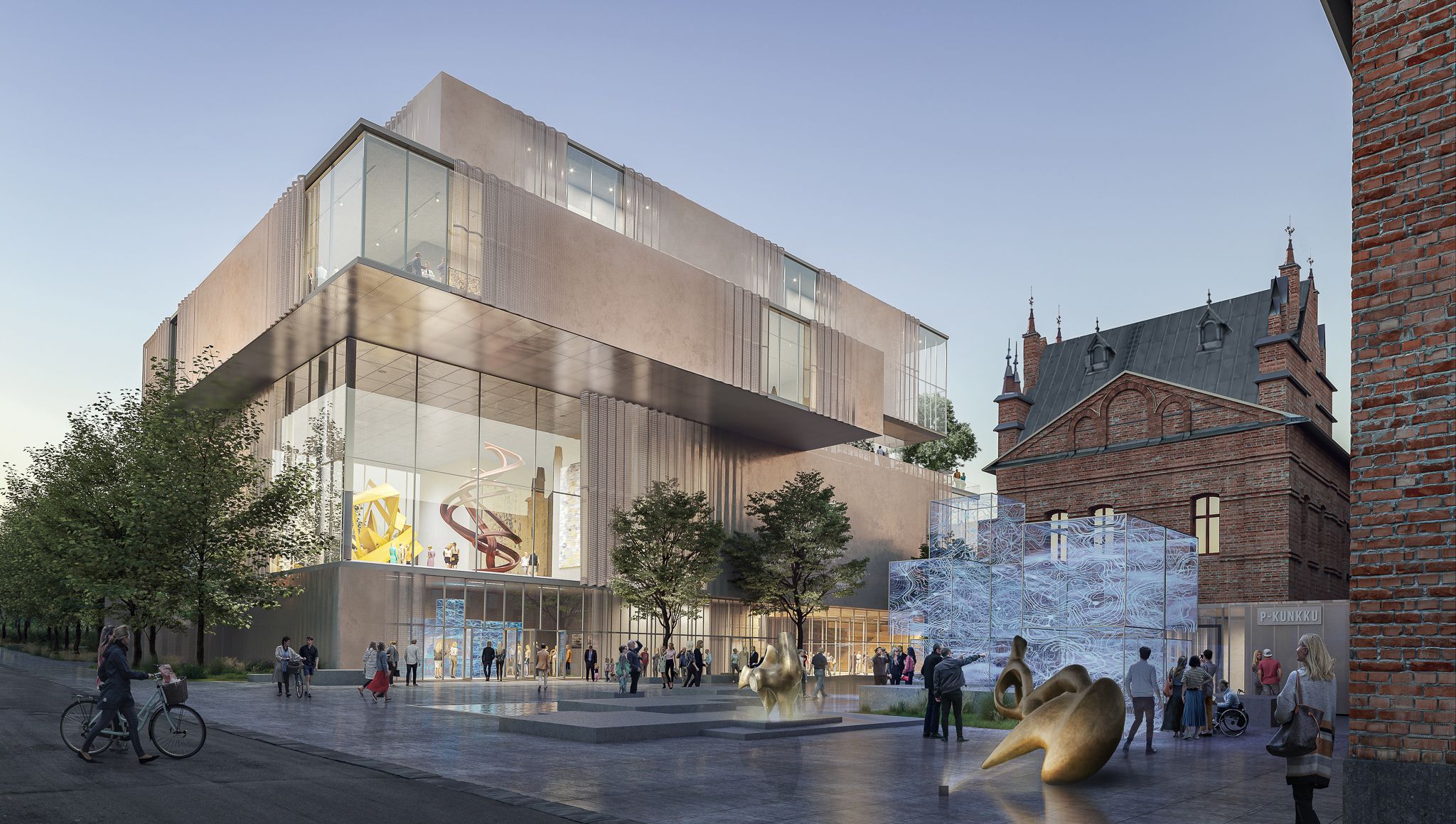
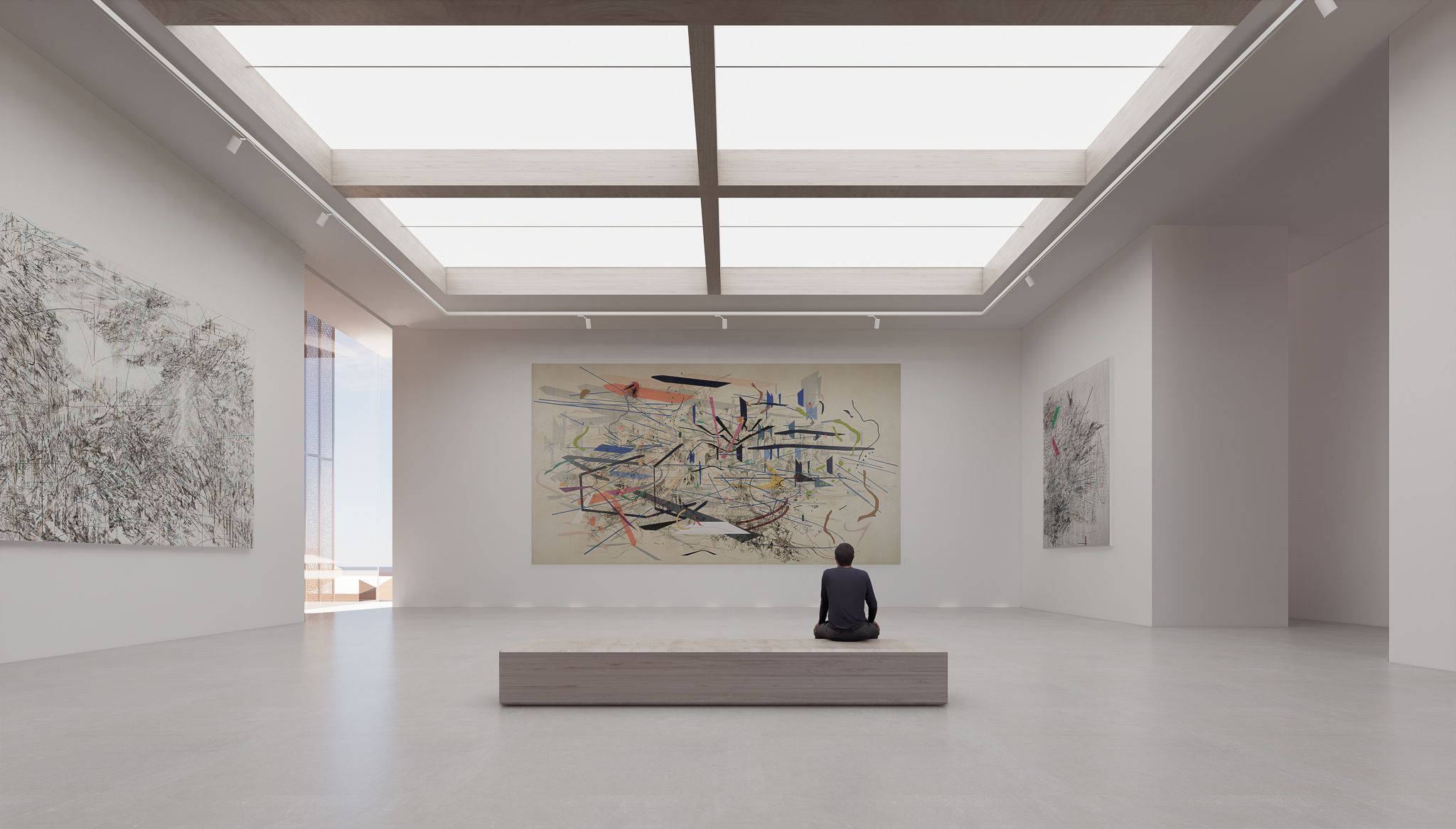
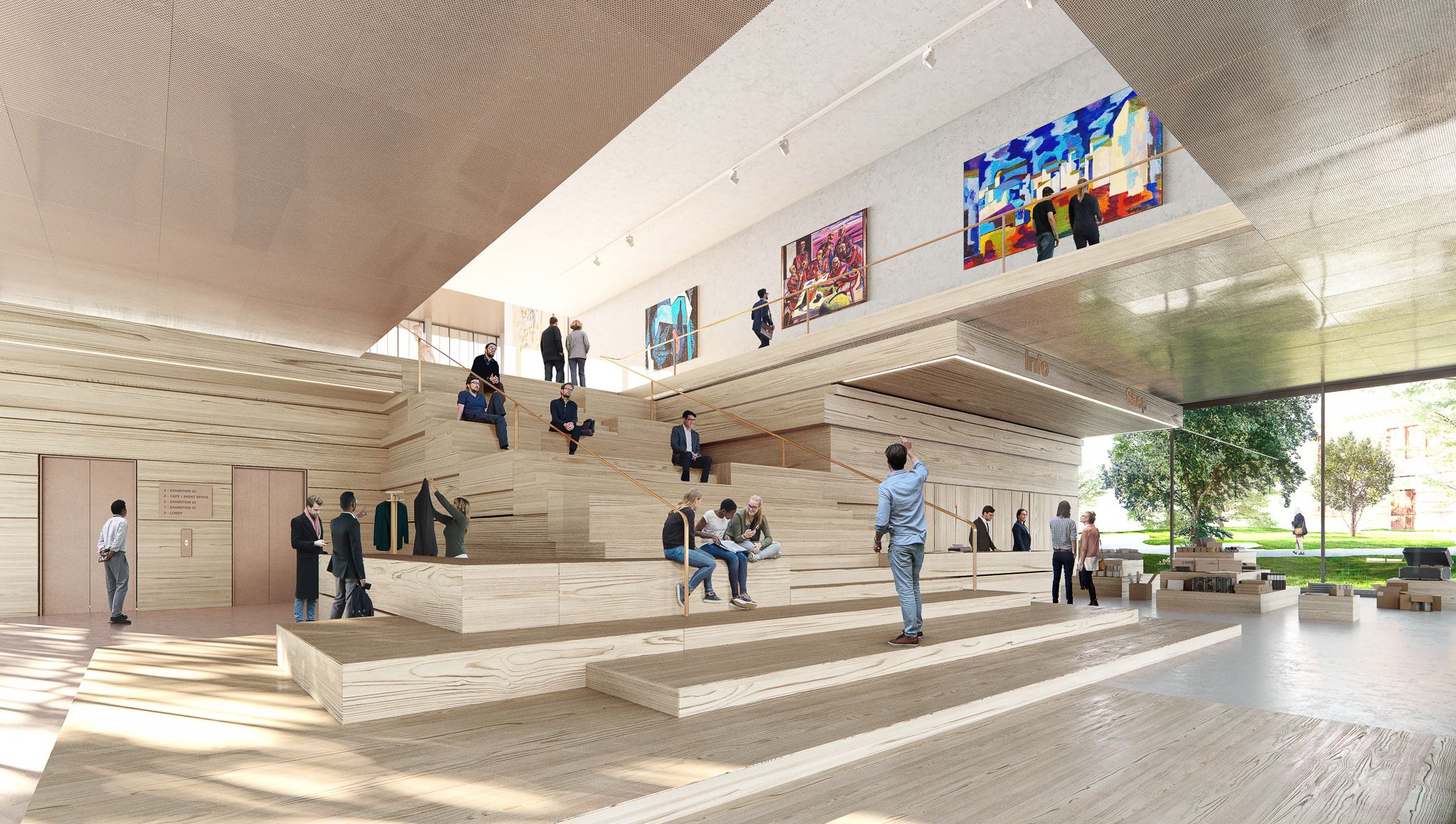
The new Sara Hildén Art Museum redefines and complements the Finlayson factory heritage in the city of Tampere. The new showcase for the vast collection of national and international art serves as an accessible and vivid extension of the cultural life of Tampere. With the collection route climbing from the urban public space up to four exhibition levels, the new Museum exhibits art in the best possible ways, while featuring the surrounding landmarks of the city as pieces of art.

Located at the edge of Wilhelm von Nottbeck Park, the shifted volumes of the museum echo the varying heights of the surrounding buildings and create an interface between the low-rise timber residential area and the densely built industrial neighborhood. The precise openings of the façade are oriented towards Tampere’s main attractions and historical context, as well as the adjacent park. The museum path allows the visitor to experience a tour not only through the art collection, but also the city itself – a vertical exhibition landscape and cultural promenade.


The four exhibition floors allow maximum flexibility, various heights and light conditions, as well as multiple options for subdivisions, flexible walls and partitions. All the rooms with natural light are equipped with a sliding façade system to close the openings depending on curatorial specifics.
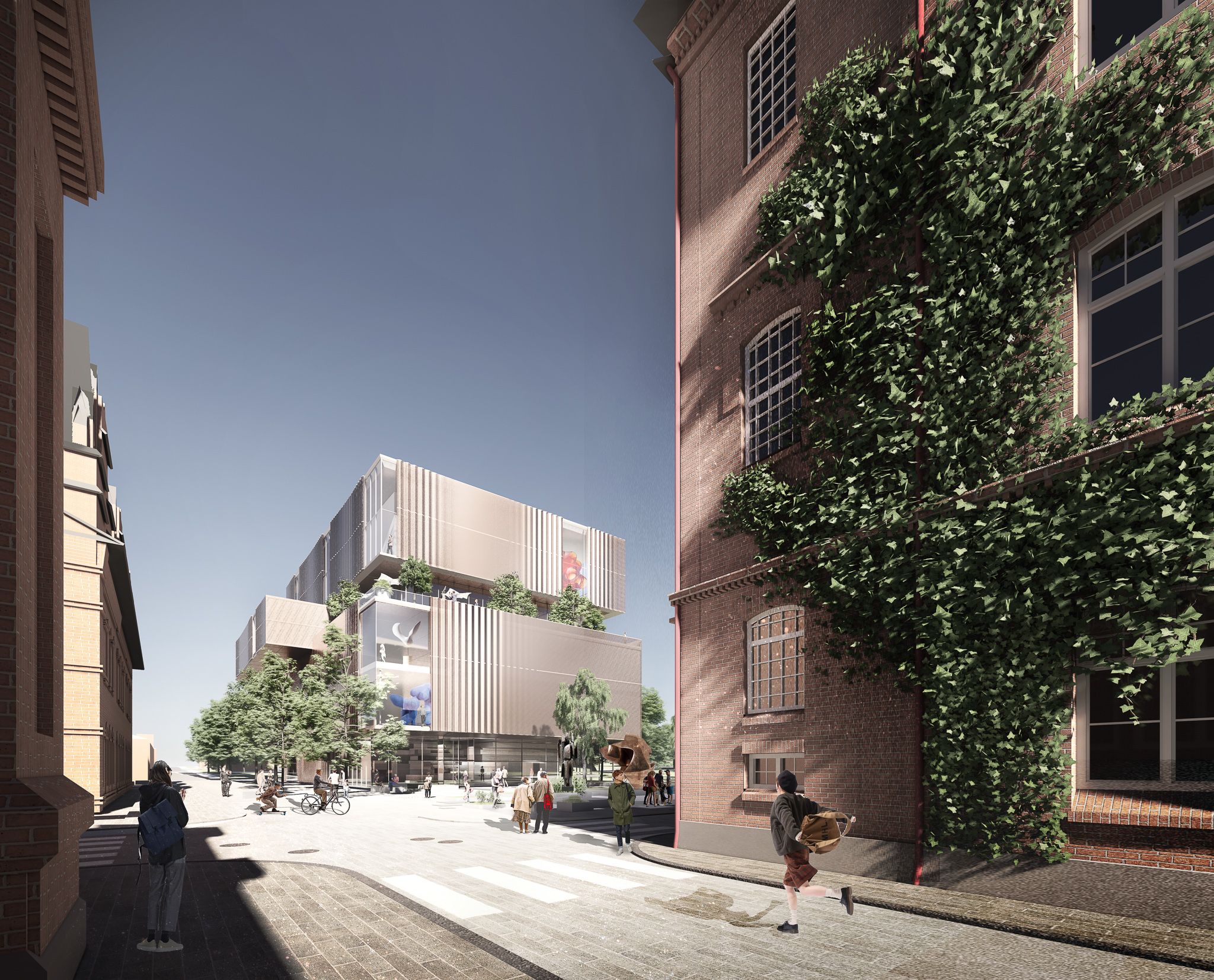
The building’s skin is a veil-like curtain façade creating a richness of depth between solid reflection, different degrees of transparency and views from and to the inside. The use of a woven façade material creates a strong link to the life of the founder of the museum Sara Hildén. Her fascination with fashion and fabric was the base for the vast collection of the museum today, yet the weaved metal fabric not only resonates with Hildén’s past, but also hints at the Finlayson weaving factories.
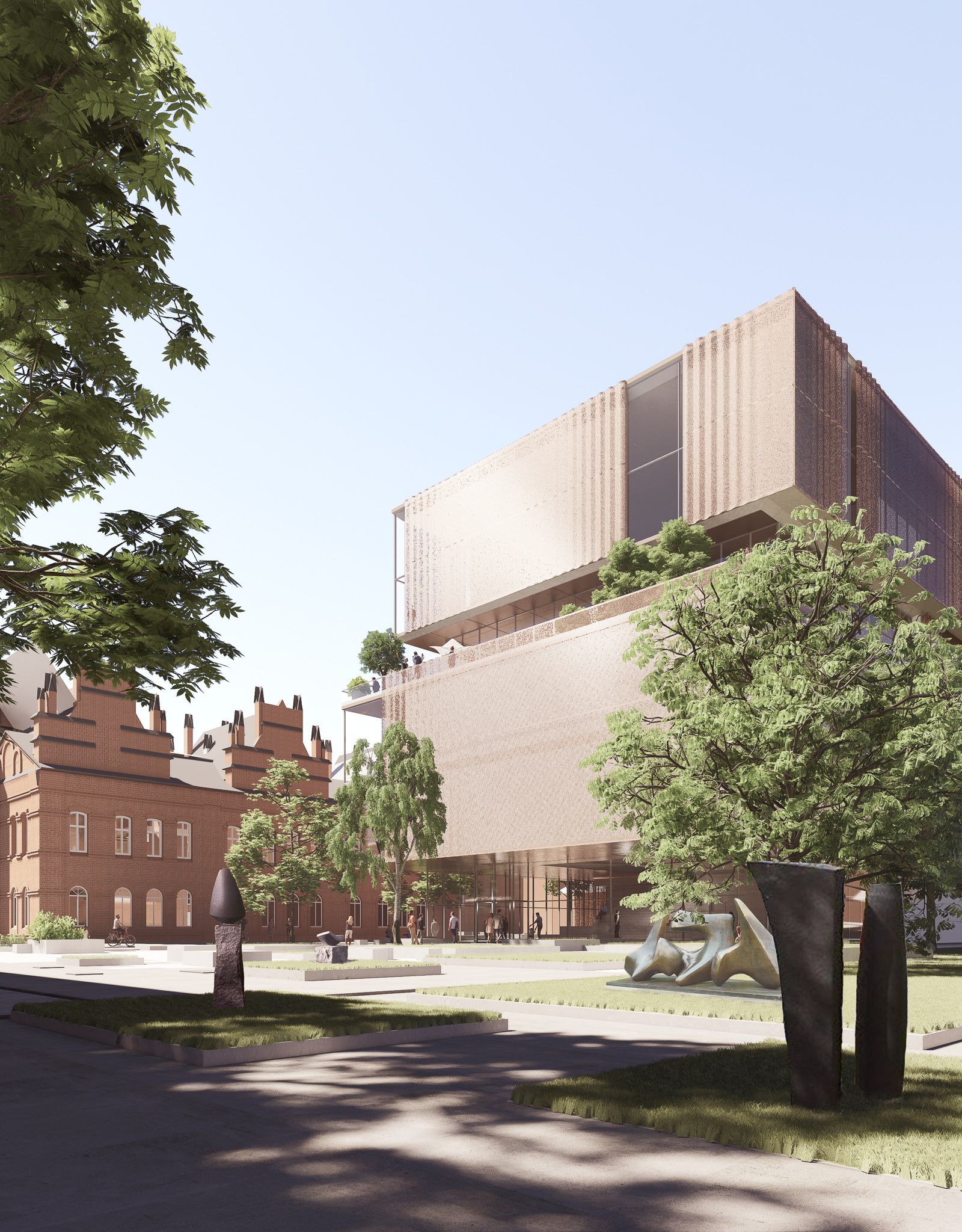
Subtle topographic shifts achieved through elevated edges and raised platforms throughout the plaza work to create a play of shadows and relief, giving the squares and plaza a sculptural quality. A sequence of subtle ramps integrated into the newly created public spaces mediate the elevation changes to ensure a continuous and barrier-free procession through the site.Individual platforms extend into the historical park and carry the concept of shifting volumes beyond the plaza and into museum’s green context. These work to create new possibilities for temporary installations in a natural setting. The shifting planes of the open space work to outline variations of use - sufficiently dimensioned pathways, small-scale green spaces for lounging as well as larger paved spaces with the ability to facilitate art installations or outdoor workshops.
Respectful to the specific site conditions and the contrast of urban density and park environment, the new Sara Hildén Art Museum is both a final corner stone of Finlayson factory grid, promoting its historical context as a contemporary urban place, as well as a solitary sculpture embedded in the extended Wilhelm von Nottbeck Park, echoing the Sara Hildén Art Museum at its original location.